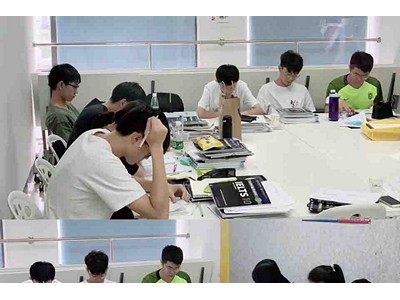东莞英凯教育(环球雅思分校)
雅思阅读真题模拟:Time to cool it
- 2024年11月10日
- 文章来自: dgukedu
- 分类: 雅思备考
雅思阅读真题模拟:Time to cool it【4】,很多同学对于这个问题有疑问和不解,那么下面就跟着的小编详细了解一下吧。
1. D

See Paragraph 3: …Alex Mischenko, of Cambridge University. Using commercially available paraelectric film, he and his colleagues have generated temperature drops…
2. C
See Paragraph 5: The first Pentium chips sold by Dr Moore’s company, Intel, in 1993, ran at 60m cycles a second.
3. F
See Paragraph 8: …Rama Venkatasubramanian, of Nextreme Thermal Solutions in North Carolina, claims to have made thermoelectric refrigerators that can sit on the back of computer chips and cool hotspots by 10℃.
4. E
See Paragraph 8: Ali Shakouri, of the University of California, Santa Cruz, says his are even smaller梥o small that they can go inside the chip.
5. B
See Paragraph 9: To improve on this, IBM’s research laboratory in Zurich is experimenting with tiny jets that stir the liquid up and thus make sure all of it eventually touches the outside of the channel–the part where the heat exchange takes place.
6. TRUE
See Paragraph 2: …paraelectric materials. These act like batteries when they undergo a temperature change: attach electrodes to them and they generate a current.
7. FALSE
See Paragraph 3 (That may be enough to change the phenomenon from a laboratory curiosity to something with commercial applications. ) and Paragraph 4 (As to what those applications might be, Dr Mischenko is still a little hazy. He has, nevertheless, set up a company to pursue them. He foresees putting his discovery to use in more efficient domestic fridges?
8. FALSE
See Paragraph 5: Heat is released every time a logical operation is performed inside a microprocessor, so the faster the processor is, the more heat it generates. Doubling the frequency quadruples the heat output.
9. NOT GIVEN
See Paragraph 9: In the future, therefore, a combination of microchannels and either thermoelectrics or paraelectrics might cool computers.
10. D
See Paragraph 6: Tweaking the processor’s heat sinks ?has reached its limit. So has tweaking the fans that circulate air over those heat sinks. And the idea of shifting from single-core processors to systems?also seems to have the end of the road in sight.
11. heat
See Paragraph 1: Today’s high-tech world, however, demands high-tech refrigeration. Heat pumps are no longer up to the job. The search is on for something to replace them.
12. paraelectric
See Paragraph 3: Using commercially available paraelectric film, he and his colleagues have generated temperature drops five times bigger than any previously recorded.
13. thermoelectric
See Paragraph 7: …the thermoelectric effect. Like paraelectric materials, this generates electricity from a heat source and produces cooling from an electrical source. Unlike paraelectrics, a significant body of researchers is already working on it.
14. radiator
See Paragraph 9: The last word in computer cooling, though, may go to a system even less techy than a heat pump–a miniature version of a car radiator.
关于雅思阅读真题模拟:Time to cool it【4】这个问题本文的分享就到这里结束了,如果您还想了解更多相关的内容,那么可以关注我们。
